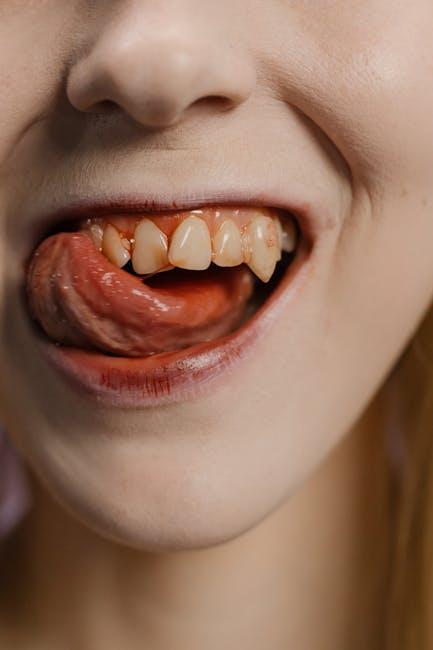
Lip Fillers Gone Wrong: A Pathology-Centered Perspective for Dental Hygienists
By rdhmag.com
In recent years, lip augmentation via dermal fillers has skyrocketed in popularity. From celebrities to clients seeking subtle enhancements, the demand for plumper, youthful lips has created an ever-growing market. However, as dental hygienists, it is crucial to understand that these cosmetic injections, while generally safe, are not without risks. When lip fillers go wrong, complications can range from mild irritation to severe pathological consequences. This article offers a comprehensive, pathology-centered perspective designed specifically for dental hygienists, empowering you to identify, educate, and collaborate effectively in patient care.
Understanding Lip Fillers: Basics Every Dental Hygienist Should Know
Lip fillers typically consist of hyaluronic acid-based gels, known for their biocompatibility and reversibility. They are injected intradermally or submucosally to add volume, shape, and definition to the lips. Despite the relative safety of these materials, errors in injection technique, patient factors, or underlying pathology can lead to adverse events.
Common Types of Lip Fillers
| Filler Type | Composition | Duration | Notes |
|---|---|---|---|
| Hyaluronic Acid (HA) | Natural polysaccharide | 6-12 months | Most popular, reversible with hyaluronidase |
| Calcium Hydroxylapatite | Mineral-like compound | 12-18 months | Stimulates collagen production, less commonly used in lips |
| Poly-L-lactic Acid | Synthetic biodegradable polymer | Up to 2 years | Gradually stimulates collagen, rarely for lips |
Pathological Complications of Lip Fillers Gone Wrong
A pathology-centered view provides insight into tissue reactions and helps dental hygienists identify signs of filler-induced complications early on. Here are some key pathological events to watch for:
1. Inflammatory Reactions
- Localized Edema and Erythema: Common immediate reactions post-injection, but persistent swelling or redness may suggest infection or hypersensitivity.
- Granulomatous Inflammation: Chronic immune response leading to palpable nodules or lumps. May require biopsy for differential diagnosis.
2. Vascular Compromise
One of the most serious complications. Inadvertent intravascular injection can cause tissue ischemia, necrosis, or even embolism.
- Signs: Severe pain, blanching of lip/mucosa, livedo reticularis.
- Consequences: If untreated, necrosis can lead to scarring and permanent disfigurement.
3. Infection
The oral cavity is host to numerous bacteria, increasing infection risk post-filler injection.
- Common Pathogens: Staphylococcus aureus, Streptococcus species, Herpes simplex virus.
- Presentation: Pus formation, ulceration, fever, lymphadenopathy.
4. Hypersensitivity Reactions
Though rare, allergic responses to filler components or preservatives may manifest.
- Symptoms: Itching, erythema, urticaria, and even anaphylaxis in extreme cases.
5. Migration and Asymmetry
Poor injection techniques or overfilling can cause migration, resulting in uneven lips or unanticipated lumps.
Role of Dental Hygienists in Managing Lip Filler Complications
Dental hygienists are frontline professionals with a unique vantage point to observe oral soft tissues. Your role includes:
- Early Detection: Monitor patients for abnormal swelling, discoloration, or tenderness during routine care.
- Patient Education: Inform patients about potential risks of lip fillers and encourage reporting symptoms promptly.
- Interprofessional Collaboration: Liaise with dentists, dermatologists, or oral surgeons when complications arise.
- Documentation: Maintain detailed records of findings that may aid in diagnosis and treatment.
Case Study: Recognizing Granulomatous Reaction After Lip Filler
A 28-year-old female presented during a routine dental hygiene appointment with multiple firm nodules palpable along the vermillion border. She reported receiving lip fillers three months prior and noticed progressive swelling and localized redness.
Clinical Findings:
- Painless nodules bilaterally.
- Mild erythema without ulceration.
- No systemic symptoms.
A referral was made for biopsy which confirmed a foreign body granulomatous reaction. The patient underwent treatment involving corticosteroid injections, resulting in symptom resolution over several weeks.
Benefits and Practical Tips for Safe Lip Filler Practices in Patient Care
While lip filler complications are a serious concern, awareness and preventive strategies can significantly reduce risks — knowledge that dental hygienists can pass along to patients and providers.
Benefits of Lip Fillers
- Enhances facial aesthetics and self-confidence.
- Minimally invasive with quick recovery.
- Reversible in most cases (especially HA fillers).
Practical Tips for Dental Hygienists
- Ask About Cosmetic Procedures: Integrate questions about dermal fillers during health histories.
- Observe Tissue Changes: Note any asymmetry, nodules, or unusual texture changes.
- Advocate for Sterile Technique: Encourage patients to seek licensed professionals following strict hygiene protocols.
- Stay Educated: Keep up-to-date on emerging filler materials and associated pathology.
Summary Table: Common Complications and Dental Hygienist Actions
| Complication | Signs | Recommended Action |
|---|---|---|
| Localized Infection | Pain, swelling, erythema, pus | Immediate referral, oral hygiene advice |
| Vascular Occlusion | Severe pain, blanching, discoloration | Emergency intervention, call 911 if necessary |
| Granuloma Formation | Firm nodules, persistent swelling | Referral for biopsy and medical treatment |
| Hypersensitivity Reaction | Swelling, itching, rash | Monitor, advise antihistamines, seek urgent care for anaphylaxis |
| Asymmetry / Migration | Uneven appearance, lumps | Patient education and referral to injector |
Conclusion: Empowering Dental Hygienists Through Pathology Awareness
Lip fillers can significantly enhance patient aesthetics but carry inherent risks that are often overlooked. Dental hygienists hold a vital position in recognizing pathological signs of lip filler complications through thorough observation and patient communication. With this pathology-centered perspective, dental hygienists can contribute to safer cosmetic practices, early intervention, and improved patient outcomes. Staying informed and proactive transforms you from a passive observer to an active participant in holistic patient care—keeping smiles healthy inside and out.


